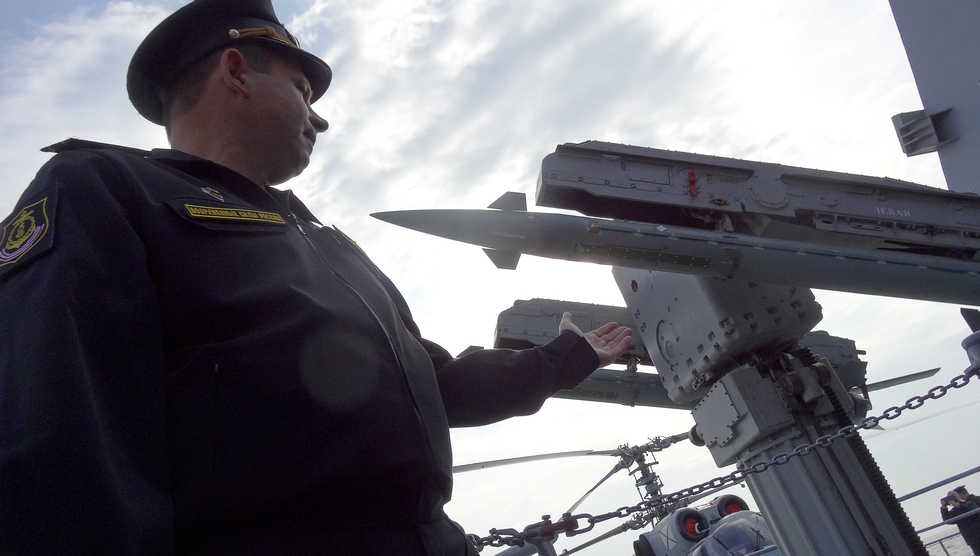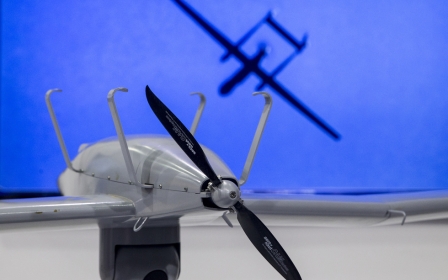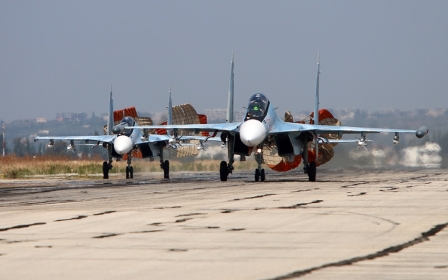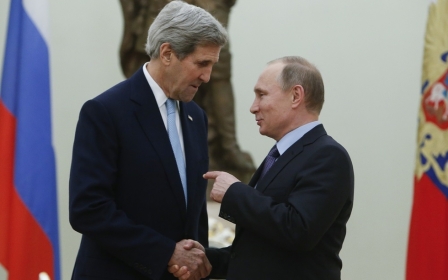Russia's military foothold in Syria strong, but could be wavering

Russia’s entry into the Syrian conflict has served as a major contributor to both containing the armed opposition as well as safeguarding Bashar al-Assad’s future, at least in the short-term. Through its air support operations, Russia has built an extensive expeditionary footprint in Syria.
And despite Russian President Vladimir Putin's latest announcement of the withdrawal of his forces, this presence is more than simply a short-term mission. In fact, in addition to inducing pressure upon the armed opposition, it is also shaping Syria’s defence posture relative to its immediate neighbours.
Defence is one of the most dominant aspects of Russian-Syrian ties. Not only did Russia find in Syria a customer of big-ticket defence hardware, but it was able to acquire a base in Tartus, Russia’s only permanent military installation in the Middle East. For the entirety of the civil war, Syria has depended on Russia for a steady supply of ammunition and spare parts, especially for its combat aircraft.
According to the BBC, roughly 10 percent of Russia’s armaments exports in 2012 went to Syria, with the Tartus base being the key point-of-entry for supplies to the Syrian government. The Stockholm International Peace Research Institute (SIPRI)’s arms transfer database states that the Russians also transferred 100 KAB-500 and KAB-1500 precision-guided bombs to the Syrian Arab Air Force (SyAAF), which offer 500 kg and 1500 kg in munitions payload, respectively. It is possible that Russia may also deliver new-built MiG-29M/M2 multi-role fighter aircraft to Syria in 2016-2017 (which were ordered by Damascus in 2008).
While support in the form of arms transfers and even direct assistance is one thing, the increasing integration of the Russian military into Syria’s security dynamics is an important development. It began in September last year with the deployment of 28 combat aircraft. For the most part, these aircraft were strike-oriented, i.e. designed to engage ground targets.
In the final quarter of last year, Russia’s direct engagement was sharply focused towards providing the Syrian government with air support, particularly through crude wide-area bombardments using unguided bombs. However, following the shooting down of a Russian Su-24 at the hands of a Turkish Air Force F-16, the forward Russian presence had begun to quickly shift towards a more "fixed" posture, particularly through the incorporation of assets that had little to do with fighting the rebels.
One day after the loss of the Su-24, the Russians announced that they would deploy the S-400, their long-range surface-to-air missile (SAM) system, under the pretext of protecting their bases and hardware assets from aerial intrusion. However, for an air defence system of that nature to be fully operable, it would require more than just its missiles and launch systems.
The S-400 also requires its 92N6E long-range surveillance and fire-control radar, command and control stations, and trained personnel. The S-400 was operational in Syria by December. According to IHS Jane’s, the Russians later augmented the S-400 with the Pantsyr-S2, an advanced short-to-medium range SAM system.
With the deployment of the S-400 and Pantsyr-S2, the Russians essentially constructed a complete and integrated air defence network in Syria, and that too using their best available systems. An air defence network has no value in terms of fighting the armed Syrian opposition, nor is it necessarily a move against NATO, which (with the single exception of the Su-24 incident) has not done anything to impede the Russians in their operations. However, the introduction and maintenance of a comprehensive air defence network clearly necessitates a heavier presence, especially in terms of military personnel.
This embedded posture is becoming increasingly apparent on the ground as well. For example, rebels and foreign military officials allied to the Syrian government have alleged that Russian advisors proactively guided plans for securing al-Assad’s strongholds.
Moreover, those same sources claimed that the Russians were even engaged in fighting various rebel factions, so as to secure ceasefires and rebel retreats. It is evident that the Russians are engaged with Syrian military matters (especially on the field) across multiple levels, and this has given the Russians manoeuvring room in terms of shaping Damascus’ strategic aims.
It must be noted that Russia has not fought under a particularly high-margin of operational risk. For one thing, it is not facing a substantive anti-air threat at any level, even at low-altitude (which had severely plagued the Soviet Union during its campaign in Afghanistan). The Syrian rebels are not equipped with a large and regularly resupplied inventory of short-range SAMs (such as the FIM-92 Stinger). As a result, they are unable to induce pressure on low-flying threats such as helicopters, which often provide the Assad’s forces with vital close air support.
With the Russian economy under stress, it is unclear to what extent the Russians are willing to remain engaged in Syria should the margin of risk for casualties and loss of high value equipment increase.
These is also the question of sustainability. Yes, the Russian presence is a vital aspect to whatever chance al-Assad has in terms of surviving the war, but even the Russians cannot compensate for what analysts consider the Syrian government’s inability to consolidate upon rebel losses.
According to IHS Jane’s, the Syrian government – with Russian support - was only able to reclaim 1.3 percent of its territory as of January of this year. In the absence of a decisive political agreement with the rebels, a military solution to the Syrian conflict would, at best, be a long-term process.
The success of such a process is basically tied to Russia’s ability and willingness to sustain its presence. While that presence has conferred Russia with significant weight in guiding Syria’s future, it is also a costly position.
In October, analysts from IHS Jane’s estimated that Russia was spending $4 million per day on its Syria mission. With the Russian economy under pressure from declining oil prices, and the resultant drop (by five per cent) in its annual military budget for 2016, it is possible that the need to finance the campaign in Syria is inevitably being weighed against other programmes, such as new armament acquisitions.
The Kremlin has to weigh its interests in Syria against its other long-term priorities, such as the wider modernisation needs of its military, particularly capital-intensive branches such as its navy and air force.
It is possible that Russia entered Syria with the idea that al-Assad could capitalise upon Russian support with quick and decisive gains, which in turn would help Russia preserve its interests in the region. However, Syria is also at risk of becoming a burden that could inhibit Russia, especially if it becomes a long-term chapter of Moscow’s foreign policy.
- Bilal Khan is a defence and security analyst based out of Toronto, Canada. He is the co-founder and chief analyst of the Quwa Defence News & Analysis Group, an independent organization devoted to discussing defence and security issues in South Asia, the Middle East and Africa.
The views expressed in this article belong to the author and do not necessarily reflect the editorial policy of Middle East Eye.
Photo: A Russian Navy Captain stands in front of an anti-aircraft system on the Russian missile cruiser Moskva as it patrols in the Mediterranean Sea, off the coast of Syria, on 17 December, 2015 (AFP).
Middle East Eye propose une couverture et une analyse indépendantes et incomparables du Moyen-Orient, de l’Afrique du Nord et d’autres régions du monde. Pour en savoir plus sur la reprise de ce contenu et les frais qui s’appliquent, veuillez remplir ce formulaire [en anglais]. Pour en savoir plus sur MEE, cliquez ici [en anglais].





